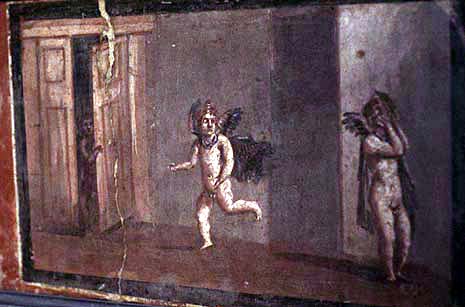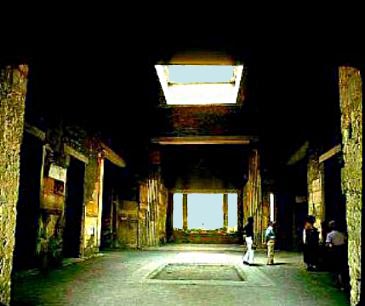

Maybe, at your house, your little sister has fingerpaintings she did in kindergarten hanging on the refrigerator, or maybe you have a picture in a frame of you and your brother on the coffee table. There are little pieces of artwork all around our houses today, and it was very much the same in Ancient Rome. Romans decorated the interior of their houses magnificently, and the ruins left behind do not offer much help for us to understand how beautiful their mosaics and wall paintings truly were. Thankfully, some mosaics and wall paintings have been preserved, and many busts that were in the Roman homes have survived with only cracks and chips.
Of course, Romans did not have photography, but they did have excellent artists who made very life-like replicas of prominent people in families. Just like you might have a picture of your grandmother, upper class Romans who had high ranking Senators (known as consuls) in their family had busts, which are statues (click here to see a bust), of all of the consuls in their family.

Romans were known for their wall paintings and mosaics. Roman wall paintings usually depicted some sort of everyday scene in Roman life (like of gladiators, or of someone buying food at the market), or it might be of a God or Goddess that the family held to be especially holy. Roman wall paintings were painted on dry plaster (unlike fresco paintings, which were done on wet plaster). Mosaics are pictures made from different colored pebbles, pieces of glass, or fragments of most anything, held in adhesive (bonding) cement (maybe your bathroom floor has tiny tiles on it - that somewhat looks like a mosaic, but mosaics used different colors to show pictures). To see a mosaic of a "watch out for the dog" sign, click here.
Romans had different art in each part of their homes. Look at the table below to see what sort of art was common to each different part of the home. You can click the green underlined text to get another page which has information and pictures showing the room.
| Part of House: | Type of Artwork Common: |
| vestibulum - it is a long, narrow hallway in the Roman home that lead to the main part of the house. | Often, there were floor mosaics that had messages for the visitor, "welcome" or "beware of the dog". Sometimes there were wall paintings. |
| tablinum- this room had family records, and was a place to display busts of ancestors. It led into the garden. | The busts of ancestors were here, along with detailed wall paintings and a floor mosaic. |
| atrium-it is a room where, during a party, guests would be met by the host. It has a shallow pool (to collect rainwater) and a large space in the roof for air to come in. | There were often colorful wall paintings. Some depicted cupids or gods and goddesses. |
| peristylium - Romans had an open courtyard in their house. Here, there was a garden, and sometimes even fish ponds. | Sculptures, detailed wall paintings, and sometimes fountains (if they did have fish ponds). |
If you would like to learn more about the Roman home, there is a website called "La Casa Romana" (that means the Roman House). This website has great pictures, but the language used in the site is Italian, so I suggest only visiting for the pictures.
Anne Houle: e-mail. December 18, 1998.